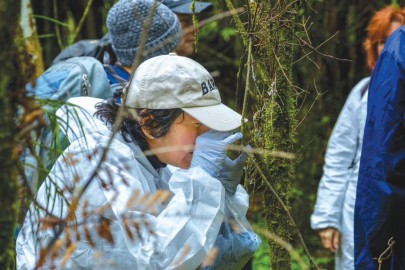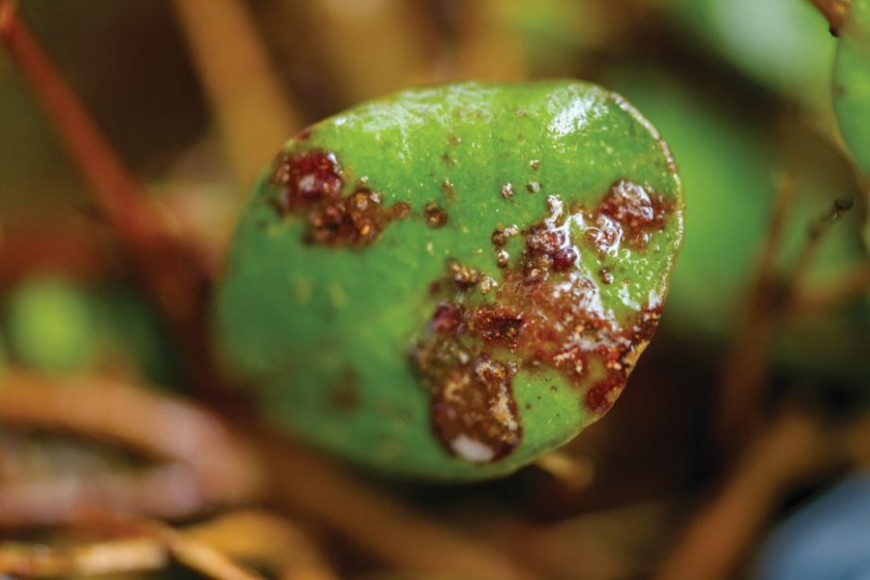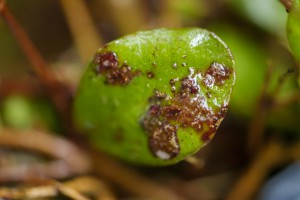Beyond Myrtle Rust – complex responses needed to solve complex problems

Dr Mahajabeen Padamsee inspects a leaf for signs of myrtle rust during a field trip to Taranaki
First detected in New Zealand in 2017, the wind-blown fungal pathogen that causes myrtle rust, Austropuccinia psidii, is now well established here. The disease threatens many ecologically, culturally, and economically important species in the Myrtaceae family, such as pōhutukawa and mānuka.
BMR is a wide-ranging research effort to improve our understanding of the pathogen itself, examine the ecosystem impacts of myrtle rust, look for control tools, and collaborate with iwi to build capacity and facilitate Māori leadership for myrtle rust management. The programme is now in its second year and already at least 20 Manaaki Whenua staff have contributed to it. A recent site-scoping field trip to two of Auckland’s regional parks – Tāwharanui and Shakespear – was a joint effort by Manaaki Whenua, Auckland University, Auckland Council, and local iwi Ngāti Manuhiri.
These efforts have been complemented by those of scientists from two other Crown Research Institutes (Plant & Food and Scion) and four New Zealand educational institutions (Auckland University, Unitec, Lincoln University, and Canterbury University). The programme also has a research leader based at the University of Queensland and draws on scientific expertise from other collaborators in Australia, where myrtle rust has a longer history. Myrtle rust research is also taking place through the New Zealand’s Biological Heritage Ngā Rākau Taketake programme (focused on kauri dieback and myrtle rust).
Keeping communications flowing in such a complex programme requires strong information sharing and coplanning. An advisory group, including representatives from government agencies, iwi, and industry, is kept informed and provides guidance. Regular communications with iwi ensure they have up-to-date information on the disease and programme operations in their rohe, as well as opportunities to participate directly in the programme.


